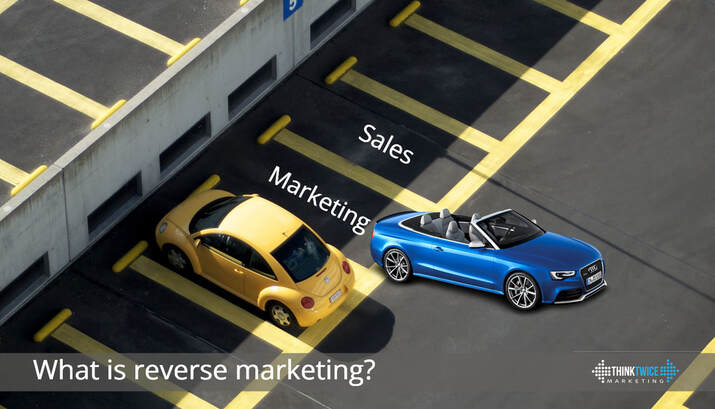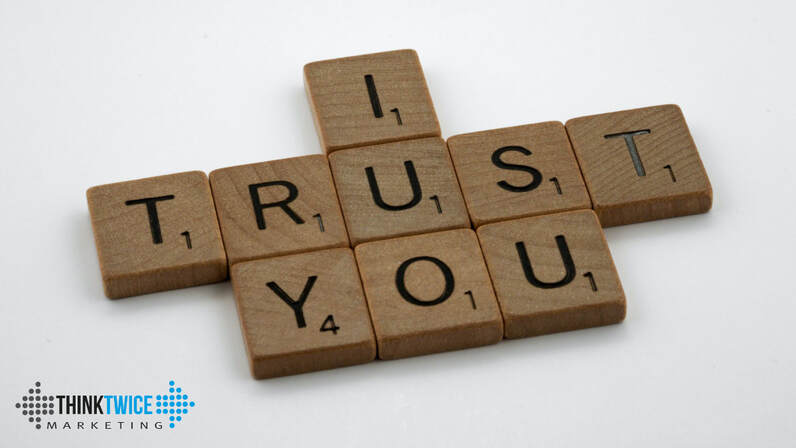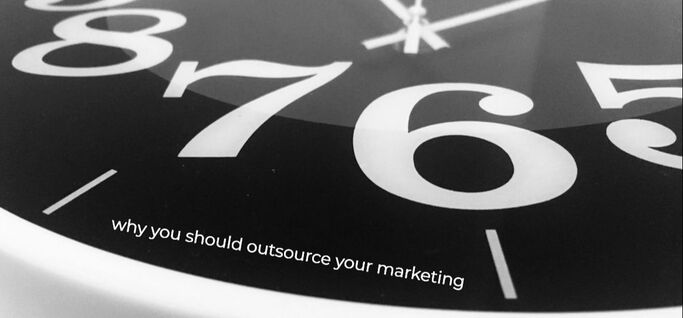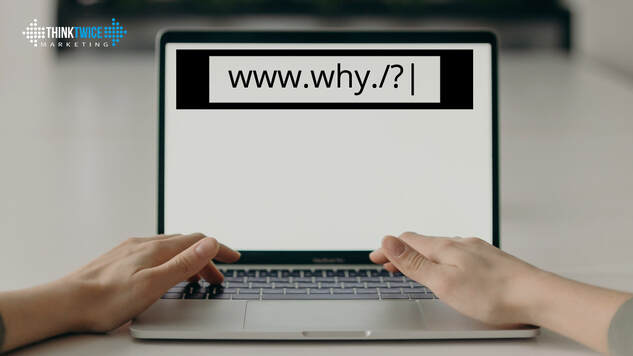|
In this blog post, we answer the question “what is reverse marketing?” and discuss the pros and cons of using reverse marketing for your business. We will also provide tips for using reverse marketing effectively. What is reverse marketing?Reverse marketing is a type of marketing when customers look for the brand, products, or services rather than the business searching for the customer. Traditional or standard marketing usually involves marketing campaigns that reach out to their target audience, in an attempt to sell their product or service. Reverse marketing, however, can involve campaigns that raise brand awareness but don’t seek to generate leads directly from the campaign. A brand might, for example, advertise its brand rather than its products on TV or in magazine publications with the objective of raising awareness of the brand. When a customer has a need for what they offer, they will then approach the company that ran the advertising campaign. Examples of reverse marketingAs a customer, Walmart has been known to do this often with its suppliers. Rather than being approached by suppliers trying to sell their products, Walmart actively seeks brands that can make or produce products, potentially at lower costs than the competition. Well-known brands such as Coca-Cola and Mcdonald's often use reverse marketing by advertising the brand. By doing this, retailers who might stock drinks and hungry consumers are more likely to relate those brands to what they offer. When they are looking at what drinks to stock or how to fill those hungry tums, those brands might be the first thing that springs to mind. Orabrush is another example of a company that has used reverse marketing successfully. Their brand awareness campaign on YouTube has been linked to Walmart contacting them to purchase their products. Prefer to watch a summary video?Feel free to carry on reading, or watch the video summary below. Advantages of reverse marketingReverse marketing builds greater loyalty from customers who are more likely to spend more and become long-term loyal clients. Think of it this way - if someone is so keen to approach you to buy from you then there is a high level of trust and confidence in your brand and, in many cases, the customer is what’s often referred to as a brand advocate (someone who is so bought into your brand that they rarely, if ever, consider alternatives). With traditional marketing, a lot of brands can use aggressive tactics that involve telemarketing, email marketing and proven and very direct sales processes to get sales, but they can be intimidating and off-putting for many potential customers. Reverse marketing, however, means that the customer approaches a brand that they trust and like or love. They are more comfortable with the brand than they might be with a more direct email and telemarketing campaign. Feeling comfortable with the brand is more likely to build loyalty and the higher the trust, the more they are likely to spend. They are also more likely to tell friends and family or business contacts about what you offer - leading to more effective reverse marketing. Disadvantages of reverse marketingReverse marketing can require a lot of time, effort and money. Building up a brand - and awareness of a brand isn’t easy, and it doesn’t happen overnight. Even when you have built up awareness, it doesn’t mean that a potential client will consider you. In sales and marketing, I often tell clients that it’s not just about interacting with a potential customer and building trust, you also need to be at the front of their mind when they are ready to buy. Take cars as an example. If someone buys a new car every 3-4 years then a car manufacturer doesn’t just need to build up awareness of their brand over the long-term, they also need to be at the front of their mind at the time when they are looking to buy a new car. Marketing to that customer just after they have bought a new car is less effective than it is marketing to them when they are actively looking to buy. We’ve seen businesses contact potential customers when they aren’t ready to buy but then they don’t follow up or continue their marketing campaign later when the customer might be in buying mode. Is Reverse marketing the way forward?I’ve personally been in sales and marketing for around 25 years (I’ve almost stopped counting how many years) and, during this time, I’ve heard the arguments for the direct approach and the “let the customer come to you” or reverse marketing approach. And, without sounding like a politician, the best approach is a blend of both. It also depends on your line of business, the industry dynamics, how big your budget is and how aggressive or direct you decide to be with the traditional marketing approach. Before a customer buys from you, they need to trust the brand. Without that level of trust, they either won’t buy or they’ve been effectively forced to “sign up” to what you offer. However - even with the highest level of trust, it doesn’t mean they will buy. I’ve often told clients that “if you don’t ask for the order, you risk not getting it”. This means having to use a more direct approach in the right way - and at the right time. To achieve sales and marketing success, a blend of reverse marketing and traditional or normal marketing is needed. You can succeed by just using one of them and they are both proven to be effective, but combining the two leads to better chances of success. At Think Twice Marketing, a large number of our fabulous customers are from referrals and word of mouth. Having happy customers or brand advocates is the ultimate way to go but we still actively reach out to our target audience with lead generation campaigns as part of an overall marketing strategy. How to create a reverse marketing planA reverse marketing strategy or plan should be part of a wider marketing strategy that includes a range of sales and marketing activities to grow the business.
Make sure you are clear on your brand message, who your target audience is and where they “hang out” or how you can reach them. This should be done before creating a marketing plan with campaign activities. The marketing plan should include activities that have the highest ROI (return on investment). Make sure you are clear on what campaigns you should run that will help raise your brand awareness as much as possible and in the most effective way. If you need help creating a marketing plan, we can help. At Think Twice Marketing, we use a proven process that involves the 3 core elements (defining your target audience, differentiator and message) before creating a clear, effective marketing plan for growing your business, and your brand. Contact Think Twice Marketing for a free discussion to find out more. In this blog post, author and marketing expert Darren Hignett talks about the importance of building trust as part of the sales and marketing process. How to build trust and generate more businessWould you buy from someone you don’t trust?
With so many scams and businesses not delivering to expectations, we have learned over time to buy only from people and brands that we trust. This makes sense. The problem is that, as marketers and business owners, we often underestimate how important it is to acquiring customers and generating sales. As customers ourselves, we don’t buy a product or service unless we trust the person or the brand, but when we get busy running marketing activities, we forget or ignore how important it is for generating sales. Take a simple one-off marketing campaign. Many businesses are often disappointed with email, telemarketing or advertising campaigns that haven’t got the results that they had hoped for. Like all good marketers, they start to look at the insights to see what’s happened. Maybe they got plenty of impressions and clicks in their ad but no conversions, so the website isn’t getting results. So they start making changes to the landing page. Or maybe their email campaign had high open rates but no clicks, so the call to action in the email isn’t working. More changes are needed. This is all good stuff, but while we are busy looking at the metrics, it’s easy to overlook what is potentially the real reason the one-off marketing campaign didn’t work. The real reason their campaign failed (drum roll…) was due to a lack of trust. But how can that be, I hear you say? How can a business with a professional brand and quality products suffer from a lack of trust? When I say trust, I’m not suggesting that their campaign looked dicey or deceptive, or that they were promising something that looked overly exaggerated. The lack of trust I’m referring to is simply that the potential customer, who received their marketing campaign message, doesn’t know the brand or the person selling well enough to want to buy from them. You might call this familiarity – “sorry I don’t know who you are, so I’d rather not buy from you”, but it’s very much about knowing enough about the business, the seller and/or the brand to trust them. You hopefully noticed earlier how I used the wording “one-off campaign”. That’s for a very good reason. You can’t build trust with one email shot or within 2 minutes of talking to someone at a business event. A business might send out an email campaign to a thousand recipients from an email list that they bought from a third party. Those thousand recipients have either never heard of the brand or know very little at all about them. Sending a single email to someone who doesn’t know the brand has got a very low chance of being a success, even with the best content copy in the world. Whether it’s networking, social media, telemarketing, email marketing or something else, trust needs to be built up. There are various articles as well as research that show that most potential customers need to interact with you or your brand on average 5-7 times before they commit to making a purchase. Let’s think about that for a second… how many times do you approach or interact with a potential customer before giving up? There’s no point beating on the door of someone who isn’t going to buy from you, but that doesn’t mean you should give up after the first point of contact with them. If you aren’t sure how many times you approach or interact with someone, let’s look at what others do… 80% of purchases are made after 5-12 interactions* 48% of salespeople never follow up after the FIRST contact And only 10% of salespeople will make more than 3 ‘contacts’ These numbers show how businesses (or in particular, those in sales and marketing) aren’t doing enough to build trust. 80% of the business comes after 5 interactions, yet around half don’t even interact twice with a customer. And that’s the real reason why a one-off campaign might have failed. And then there’s the other form of trust… Trust builds over time, but it also builds with credibility. If your product has an average rating of 1-star on a website after a thousand reviews, no amount of time is going to give the consumer the confidence that your product is a must-buy for them (“Look Cassandra, this product has a thousand poor ratings, let’s by that one!”). On the other hand, you can speed up the process of building trust by using social proof such as positive reviews and recommendations. The more positive reviews and social proof you have, the more someone is going to trust you. Another way to build up trust is by offering a trial or a sample of what you offer. This reduces barriers to sales by allowing potential customers to see if what you offer is genuine, and in line with their expectations. Here are some ideas for ways to build trust: - Use words in your marketing such as ‘proven’ or ‘money-back guarantee’ - Grow your 5-star ratings and communicate it to your audience - Offer a trial or a sample of what you offer - Ask for recommendations - Tell people how long you have been established or how many customers you have served Summary As you can see, trust is key to someone buying. Before you go live with your advertising campaign or click send on your email campaign, ask yourself if you are doing enough to build and develop trust. After all, it could be the primary reason you didn’t get the results you expected. Need help? In my book Psychology in Marketing and Sales, I talk about building trust as well as the use of various tactics that you can use to increase sales. Make sure to grab a copy. If you need help with your marketing and building trust with your target audience, get in touch with Think Twice Marketing. Thanks for reading! I trust you found it useful… *https://jmjdirect.wordpress.com/2010/01/14/how-many-contacts-does-is-take-to-make-a-sale-follow-up-is-the-key/ In this blog post, discover... Why you should outsource marketingAre you busy? If you are a business owner reading this, then the chances are the answer is yes, you are busy - but let’s expand on that: Are you busily working on the right stuff? It’s easy to get busy in the modern world. When you aren’t delivering to a customer, managing staff issues or doing sales and marketing activity there’s always finances and bookkeeping to manage or general admin stuff that’s outstanding. For the typical business owner, there’s even stuff on the list that will probably never actually get done! At this point, you might be expecting some tips for how to prioritise what’s important and manage your lists of endless tasks better. There’s no top tips or discussion on to-do list management in this blog post. Instead, we are looking at a much more effective way to get results in your business… outsourcing. Let’s understand the definition of outsourcing as well as how you can use it in your business and the benefits of outsourcing. Watch the summary of this blog post...What is outsourcing in business?Outsourcing is about getting things in your business done by outside sources, or in other words, by a business that’s not directly employed as an employee is by your company. Typically, work is outsourced to another company that specialises in a particular area of expertise and this has huge benefits which we will discuss later. What can be outsourced?In recent years, outsourcing has become more acceptable with the growth of businesses that provide support in different areas. A business can outsource marketing, bookkeeping, general admin and even sales activity. Outsourcing examples also include facilities management, catering, HR, logistics and IT support. When deciding who to outsource to, make sure you are clear on what your objectives are, what you want the outsourcing company to do, and that they have the skillsets and ability to help you. In many situations, you will most likely be sharing confidential or valuable information about your business with another company, so it’s important to have a high level of trust. A bookkeeping company for example will have access to your financial information, an admin company might have access to information such as who your customers are and a marketing agency that offers outsourced marketing services will need to understand many elements about your business and your target market - and if they are posting on social media for you then they are representing you publicly in what they do! Can sales be outsourced?Outsourced sales is a great way to generate more business, but it must be done properly and in partnership with the right third party. When outsourcing sales, you are putting your reputation with potential customers in the hands of someone else so the company you partner with must understand your products and services and how you operate, as well as the ethics and culture of your business. We aren’t saying you must not outsource sales. If a third party business has proven expertise and you can trust them, then it can be highly beneficial to use them. What are the benefits of outsourcing?As well as freeing up your time, outsourcing has another huge two-sided benefit. It allows you to recruit expertise in an area that you aren’t strong in… And it allows you to focus on what you are good at. Let’s take a plan to outsource sales and marketing as an example. As a business owner, you might be really good at designing and delivering the product or service that you provide to your customers. A manufacturer has expertise in making a great product while a personal fitness trainer provides a great service in helping clients stay fit and healthy. Both the manufacturer and the fitness trainer have proven skills sets and knowledge in their respective areas of expertise, but neither of them might be any good at sales and marketing. In fact, many business owners we talk to dislike the idea of selling and find the art of effective marketing to be overly complicated and tough. We can empathise with those feelings. On the other hand, a marketing agency that delivers marketing campaigns and activities throughout the day and on a daily and weekly basis (and has done for years) should know how to get results out of marketing - whether that's support with email marketing, Google Ads or any other marketing activities. Outsourced sales and marketing could be the perfect answer to a business that wants to grow its business while focusing on delivering great products, services and customer service. Should the busy business owner try to learn in-depth how to do effective marketing, or should he or she outsource to an established expert that can fast-track results? From a different perspective, for every hour a business owner works on a task such as bookkeeping or marketing, that’s an hour less that they can focus on what they do best. There are only so many hours in a day and spending it on things that a business owner is not good at is lost time that could be spent on what they are good at. Why should I outsource marketing?We have already given some valuable insights into the benefits of outsourcing and how that can benefit you from a marketing perspective. Let’s also look at some other reasons why outsourcing marketing can benefit your business. 1. Speed up the learning curve Marketing is always evolving. The worldwide web has only existed for a tad over 20 years and Facebook wasn’t available to the public until September 2006 (while TikTok and Instagram are barely teenagers!). There are two choices - spend time understanding how to get results using the latest various platforms and channels with the risk of wasting time or money - or speed up the learning curve by getting help from someone who lives and breathes marketing on a daily basis. This doesn’t mean that you should be ignorant of the latest trends, or not get involved at all in your marketing. When you used outsourced marketing services, the company you put your trust in must be held accountable, and the work they do must be closely aligned with the objectives of your business. And you need to work with them to make sure that happens. Working with a third party is about “working with” them. It’s not a case of dumping activities on them, crossing your fingers and hoping for the best. 2. Reduced staff and training costs Another benefit of outsourcing marketing is that there’s no need to hire and train staff to do your marketing for you. Even if you do recruit someone who doesn’t need training, there are still significant costs involved in having someone do your marketing activities in-house. Using a digital marketing agency means that you can increase or decrease activities to suit your needs while keeping within your marketing budget. At Think Twice Marketing, we offer a unique package called the Marketing Manager to support your business as it grows. Click the button below to find out more. 3. Get more marketing done Marketing can be time-consuming. An established marketing agency such as Think Twice Marketing has processes set up to get marketing activities done quicker, without compromising on quality. Take posting on social media as an example. Manually posting on each social media platform can be time-consuming. Having access to a third-party app, however, can save time by scheduling content at the same time across various social media platforms. The content can be tailored to each channel without taking up too much time. Having access to apps and tools as well as having the knowledge and experience mean that an outsourced marketing agency can be much more productive as well as effective. Are you ready to outsource your marketing?At Think Twice Marketing, we offer outsourced marketing services. If you are looking to grow your business and get better results out of your marketing then get in touch with us to see how we can help.
We offer a free consultation to understand your current challenges and objectives. We will also provide you with some valuable insights and tips to help you with your business. I’ve written a lot about pricing in my book Psychology in Marketing and Sales, as well as in previous blog posts and I’m often surprised when I hear small business owners (especially startups) ask how they can possibly charge for something when other people are offering similar services for free. A recent example of this is when a customer of mine pointed out that his competitor is charging £25 for a webinar. “How can they do that”, I was asked, “when everyone is currently doing similar webinars for free?”... and from what we could see, the competitor is successfully selling these webinars. The reason for the success comes down to what I like to refer to as the ‘Offer’ - the way that the product or service is positioned including the key message, the benefits and who is being targeted. As well as the way the offer is positioned, the price itself can have a big impact on perception. Without knowing anything about jewellery, for example, a customer might assume that the higher-priced necklace or earring is better quality. The webinar or training course that has a higher price tag could be assumed to provide more valuable content. Is it about pricing or perception?The purpose of this blog post isn’t to give you specific actions or strategies for your business when it comes to product positioning and pricing.
The aim is to provide you with content to reflect on, and to help you think about how you can position your products better - and that’s why I’d like to share the following examples I came across recently (by the way, if you would like to have a review of your pricing strategy or how you position your offer then I provide a 90-minute one on one session that could make a huge difference to your business. Click here to find out more). The apple story I have come across this from multiple sources, and while I don’t know if it’s a true story, it’s still great to read… An old man was selling apples. His price list reads: 1 apple = $3.00 3 apples = $10.00 A young man stopped and bought 3 apples individually - paying $3 for each. As the young man was walking away he turned and said “Hey old man, do you realise I just bought 3 apples for $9, instead of $10? Maybe business is not your thing?” The old man smiled and mumbled to himself “people are funny. Every time they buy 3 apples instead of 1, yet they keep trying to teach me how to do business.” Comparing Apple, not apples On the subject of apples, The iPhone (ok so a different type of Apple!) has been very successful over the years with a much higher price than many of its competitors. We could get into an in-depth comparison on how good the iPhone has been over the years compared to other phones but, despite some phones being arguably better, having more features and being cheaper, they have not sold as well as the iPhone. Why? Because Apple products have strong desirability. The brand has been built up over the years and the ‘Offer’ has been created and positioned in a way to make the iPhone a MUST HAVE product. What’s your OFFER? When it comes to selling and marketing your products and services, it’s not just about the price, or about the features. It’s about many elements that need to come together as a complete package. Success depends on creating the right offer and then communicating it effectively to the right audience. The right offer consists of having the right product, with the right features and benefits at the right price, and that also needs to be communicated to the right target audience. That’s a lot of ‘rights’ but you get the idea. If you need help with positioning your offer correctly and making it a success, let’s have a chat to see how I can help. Get in touch today. How important is brand image when it comes to customers buying from you?A few months ago I was out for a walk with my son and we passed a For Sale sign for a property, and the contact details at the bottom of the sign included an email address that was Hotmail (such as [email protected]).
My teenage son called out jokingly “at hotmail, I’m not buying that!’ - which got me thinking about the importance of professional branding (the fact a teenager is suggesting he’s interested in buying a house didn’t bother me, knowing that anything on the market is clearly out of his budget in the short-term!). For many years, I’ve always argued that businesses serious about growth need to look professional, and seeing signage or wording on vans (such as for electricians or plumbers) that have a gmail or hotmail email included is likely to put doubt in the mind of the buyer. If you don’t know the two electricians, would you rather buy from [email protected] or [email protected]?* But I would argue the importance for having a professional brand, right? Afterall, I’m in marketing and brand reputation, and building credibility and trust with customers is something at the front of my mind on a regular basis. But in this scenario, it wasnt me. It was a teenager with little knowledge about marketing concepts and who has no experience of buying high priced items such as cars or a property who clearly pointing out that the lack of professional branding in the contact details could be a reason not to buy. Potential customers seek credibility When a potential customer looks to buy from a business, they want you to show credibility that you are a trustworthy brand. If there is any doubt about your credibility then they will look at buying elsewhere, and not from you. Think of it like a job interview. When recruiting, a business might receive a stack of CVs to find their ideal candidate. They can’t interview everyone and if they all look good then there’s a dilemna, so what to do? An easier option, which is usually deployed, is to find a reason to discount a candidate with reasons such as ‘there are a couple of spelling mistakes, do we really want that lack of attention to detail in that role?’. Finding reasons not to hire or interview is as powerful as finding a reason to hire someone, and when it comes to brand reputation the same applies. The copywriter that sends you a badly worded proposal, or the accountant that messes up the figures in their quote they send to you, are sure to reduce the chances of getting the business. Of course there are many other factors that come into the decision making process but building trust and credibility is a major reason for someone to buy. Attention to detail Often it doesn’t take much effort to re-check wording on your website or in proposals to make sure that there aren’t any obvious mistakes, and having a professional email address or company logo doesn’t have to cost a lot of money to implement. In fact, the cost of having a registered domain that looks professional should be compared to the cost of losing business from potential customers who decide to go with your competitors! In the example above, an estate agent makes thousands of pounds on the sale of a single property. The cost of registering a domain and setting up an email address with that new more professional domain can be as little as £20-80 a year (in fact, you can use Zoho mail which is free and the total cost can be even lower). Is your brand up to scratch? If you are worried that your brand isn’t providing the professional image that you need to win business then get in touch for a free marketing review. We would be happy to provide you with some top tips and suggestions. Call us today to find out more. *These email addresses are made up. I also mean no disrepspect to hotmail and gmail accounts. On a personal level, they are great to use. This blog post is part of a series about making 'cracking presentations' by Paul Sampson. You can read the first article here: So, how good are you at presentations?  Written by Paul Sampson Written by Paul Sampson Let’s face it, Presentations are all about selling ideas. I often hear people saying, ‘But, I’m not a sales person!’. Well, you are now! Presentations are meant to sell a concept or viewpoint, to enlighten and inform. You want everyone in the room to agree with you or to argue a point. That is healthy. If they disagree, you want them to challenge you. Whatever else happens, they cannot leave the room confused, doubting you or your material. So, with preparation of your material – decide on the end goal first. What should your audience walk away with?
One way (and later, we’ll talk about others) is to think about your delivery. Learning to be an actor includes all kinds of techniques from mannerisms, to diction, accents, characterisation, body language and delivery but this may interest you – it’s called TTAIC. Acting is selling. Selling your character and your story. TTAIC is taking the audience into your confidence. Everyone in the room must be with you. Just one cynical, dissenting voice after the presentation can demean or even kill your argument. Each person in the room counts. No matter their seniority. You must have everyone on side. More later …. “Cracking Presentations” through Think Twice Marketing is a whole-day classroom-based course. It will equip you and your team to make presentations effective and your time efficient. Many marketers would be astounded that I have even asked the question. In today’s modern world and circumstances, how can anyone not have a website? Surely a business can’t survive without a website to attract, inform and convert people into paying customers? Do I need a website for my business?Before the COVID-19 pandemic, I continued to come across businesses who didn’t have a website - yet they had been in business for a number of years, rather than weeks. These businesses had survived on other tools and techniques. The independent cafe that attracted customers through Google Search (using Google My Business), a Facebook page and word of mouth, the coach that built his reputation from a heavy investment in networking and referrals and the construction company that partnered with key suppliers who would ‘throw work their way’ on a regular basis and they did very little marketing at all. Survive or thrive? From the above examples, it’s possible to run a business without a website (Shock! Horror! Really?). These companies are clearly the exception and the number of business that can do this over the long-term has to be dropping*. While some businesses without a website have been able to continue to thrive and grow, I believe that most are simply surviving. Without factoring in COVID-19, If you asked them how business is going, they would respond “it’s ok. Not brilliant but you know. We are still going and earning enough”. “If you always do what you have always done, you will always get what you have always gotten” - unknown … or maybe not? If a business is happy surviving and has no ambition to grow or take their business ‘to the next level’ then it might be possible to survive by doing very little marketing or without a website, but this is a very risky strategy (or should I say a very risk not-a-strategy?). As much as I love the above quote, there’s an equally powerful quote for businesses that I like: "If you don't drive your business, you will be driven out of business" - Forbes Standing still on activities could actually mean going backwards. Not doing marketing activities or not having a website doesn’t mean your business will continue to generate business at its current level. It means you could lose business, sales will most likely decline and survival is less likely. I remember meeting a business owner, who provided trade services, at a networking event a few years ago. He said that, after around 10 years in business, he was networking for the first time and having to look at his marketing. They had relied for many years on word of mouth, but business was, in his words ‘beginning to dry up’. The benefits of a website for your businessWe won’t go through all of the benefits of a website here, but having a website means you can be found by more potential customers through channels such as Google Search. Potential customers are more likely to trust your brand and therefore use your services, and you can also create more marketing activities that generate a higher conversion rate. Examples of the latter include a simple landing page with a special offer or using Facebook Pixel code to drive down costs and better target your audience when running an Ad.
Summary You probably knew the answer to this already but, if you are serious about staying in business or growing it, then a website should be at the heart of any sales and marketing activity. Yes, people buy from people and referrals are a powerful form of marketing, but this has its limits - especially over the long term. If you are still in ANY doubt then do a quick calculation - how many customers do I need to generate to pay for a new or an updated site? For many businesses, an effective website will help attract a much larger number of paying customers. It’s almost, if not completely, a no-brainer. If you would like to find out more about effective websites and pricing, visit the Think Twice Marketing web services landing page. *I don’t have stats on this but I’m guessing it’s a pretty good gut feeling I have. I have just finished reading ‘The Subtle Art of Not Giving A F*ck’ by Mark Manson (which if you would like an alternative perspective on life, I recommend reading). In the book, Mark talks about the Picasso napkin story which was new to me. If you haven’t heard it, the story goes something like this…
Picasso used to draw or doodle on his napkins when at a cafe and one day, he was asked by a woman if she could have the napkin to keep. She offered to pay whatever the napkin with his drawing was worth, to which Picasso responded that it would be $10,000. Slightly taken aback by the high valuation, the woman pointed out that it had only taken 30 seconds to create the artwork. Picasso promptly folded the napkin away into his pocket and responded ‘no, it has taken me 40 years to do that’. Depending on what website you visit the story varies slightly, and whether it was dollars, pounds or another currency, it was a considerable amount of money. There is, however, a good argument for not basing the price on how long the drawing took. When it comes to selling your services, do you quote an hourly rate depending on how long it takes to do a task? Do you price your products on the value to the customer? Or how many years of experience it has taken to learn the skills you have acquired so that you can deliver what you do… and so quickly? When talking to customers, and in my book Psychology in Marketing and Sales, I discuss different ways to price products to get the right results. A web designer, for example, might be able to create a website in one day and charge a daily rate - but if the customer does it themself, it might take days or even weeks. Added to this, a DIY website might not look as good, It might not function as well and it will most likely not convert web visitors into paying customers as effectively (resulting in lost sales in the long term). Similarly, a training instructor, coach, consultant or security business (just to name a few specialities!) can make a huge difference to anyone’s life or business, but only because of the skills they have developed over the years. And the prices they charge should reflect this. It’s true that you need to consider other factors when setting pricing such as what the competition is doing, how much competition there is and who your target audience is, but creating pricing based on ‘cost plus margin’ or an hourly rate could mean you are losing out considerable amounts of money. Sometimes it can take years of practice and experience in order to be able to continually create masterpieces in a very short time. That experience has a value. What’s your napkin worth, and what are you charging for it?
The number three is a magical number which if used properly in your marketing, can help get better results. I was trailing through my archived emails the other day when I came across an email talking about how remembering numbers is easiest when they are grouped into sets of three, and it got me thinking. How can this apply to marketing and sales?
Using the concept of grouping things into 3 means that you can do the following:
The way that the power of three works is simple (I could say I will explain it in 3 simple steps but on this occasion, I won’t). On its own, a single number, price or product seems ‘lonely’. It’s not comprehensive and there’s nothing to compare. The human mind can absorb a lot more information than that so lets at least double it… Two is good, but it could be better. If I ask you to remember a set of numbers, let’s say 702393, you could remember them individually as six separate numbers. You could remember them in groups of two, such as 70, 23, 93 or in groups of three such as 702, 393. You are more likely to remember them - and longer groups of numbers, in groups of three. In his book, How to Write Short, author Roy Peter Clark talks about how using the rule of 3 can be more entertaining and satisfying as well as being more effective. Before we apply this to marketing, let’s consider some real-world examples of how three is being used: Boris Johnson, the UK Prime Minister, was involved in using a simple 3 worded slogan during the EU referendum campaign that was simple and easy to understand: Take Back Control. He then became Prime Minister and won a general election with the three worded slogan ‘Get Brexit Done’ which almost seemed like his answer to everything… but it worked. In 2020 during the COVID-19 outbreak, he also made the message clear ‘stay home, protect the NHS, save lives’. Ok, so the first and last part are only 2 words, but the slogan is split into 3 sections that are easy to understand, memorable and made sense. Staying at home helped protect the NHS and helps to save lives. The power of 3 can be covering 3 words in a slogan or three individual concepts. Martin Luther King Jr., the civil rights activist, often used the power of 3 with lines such as “insult, injustice and exploitation” in one of his speeches* followed by “justice, goodwill, and brotherhood.”. Listing 5, 6 or even 10 things would have been harder to remember and would have diluted the message. Listing three things also makes the presenter seem more knowledgeable. Julius Caesar said “I came, I saw, I conquered”, Winston Churchill once said “Blood, sweat and tears” while the American Declaration of Independence says “Life, Liberty and the pursuit of happiness”. The power of three is not new, but it’s often forgotten when trying to make marketing more effective. Using it in your marketing In my book, Psychology in Marketing and Sales, I talk about Decoy Pricing which involves offering a third pricing option. This third option increases sales conversions and also results in customers opting for higher-priced products or services. This works for various reasons, one of which is that it takes the mind away from comparing lower-priced products, or not buying at all. In your marketing communication you can also use the power of 3 as follows:
Here are some examples to consider: An accountant might highlight they offer ways to save on tax, avoid fines and grow your business as the main benefits. A web designer might increase the value of a service by offering a 3 in 1 package: web design, blogging and social media for one single price. A software company might communicate that their product can be set up in 3, easy to follow steps. A fashion designer might use a slogan such as ‘look great, feel amazing, be different’ Whether you use 3 or another number in your marketing, it’s important to keep messages simple and easy to understand - while making your product attractive. If you would like help defining your marketing messaging and communicating to your customers then get in touch today. *His speech “Non-Violence and Racial Justice”  Written by Paul Sampson Written by Paul Sampson I’m sure you’ve been to many presentations/meetings where you get to the end and think you’ve wasted an hour or more of your life. If it’s been a whole morning, it can be even more exasperating. Your time is valuable. Work must be done or you’re running late. But you’ve just wasted 10% of your working week. So, when it’s your turn, you get the nod saying ‘please present X to 2-20 people,’ how do you react? In most cases you realise that it’s quite a responsibility. Others freak at the thought and have sleepless nights and palpitations. However, it is fair to say, that when you get it right, it can do your career a lot of good. That’s what ‘Cracking Presentations’ does for you. It makes you good at this art. I cannot condense a whole day’s course material into a few hundred words so for now, let’s just look at the first stage – Preparation. For a start, 80% of the success of a presentation hinges on your preparation. Sadly, many go off on their pet subject like an avid train spotter, but this is all about confidently showing others a smart piece of work so that they understand and agree with your proposition. I often hear people saying, ‘But, I’m not a sales person!’ Well, you are now! Presentations are meant to sell a concept or viewpoint. You want everyone on the room to agree with you or argue a point. Then the essential points that should be implemented. It may be only to bring people up to speed. Whatever else happens, they cannot leave the room confused, doubting you or your material. So, with preparation of your material – decide on the end goal first. What should your audience walk away with?
There will always be cynics (‘I don’t really need to be here/ I’m too busy.’ ‘Let’s get this over with.’) That is why you have to overcome any objections or reticence, so bring people onside. You only get one chance to make a first impression, so decide on what that should be. Hook people from the introductory 30 seconds and you’ve got a chance! Seth Godin in his clever book, Tribes says: People don’t believe what you tell them. They rarely believe what you show them. They often believe what their friends tell them, but they always believe what they tell themselves. What leaders do is tell stories they can tell themselves, stories about the future and about change. Seth Godin, Tribes Your presentation should change people, their opinions, so enlighten and inform.
Look out for future blog on the subject. This material will change you. “Cracking Presentations” through Think Twice Marketing is a whole-day classroom-based course. It will equip you and your team to make presentations effective and your time efficient. |
written byThe opinions in these blog posts are those of marketing expert and book author Darren Hignett. Categories
All
Archives
October 2022
|
|
Open 9 am - 5 pm
Tel: 07769 331 247 |













 RSS Feed
RSS Feed